- Birckman, P., et al. “Lottery winners and accident victims: Is happiness relative?” Journal of Personality and Social Psychology, vol. 36, no. 8, 1978, pp. 917-927. American Psychological Association, https://psycnet.apa.org/record/1980-01001-001/. Accessed 29 Sep 2020.
- Clear, James. Atomic Habits: An Easy & Proven Way to Build Good Habits & Break Bad Ones. Avery, 2018.
- Collins, Jim, and Jerry Porras. Build to Last: Successful Habits of Visionary Companies. 1st ed., Harper Business, 2004.
- Duckworth, Angela. Grit: The Power of Passion and Perseverance. Scribner, 2016.
- Ferris, Tim. Tools of Titans: The tactics, routines, and habits of billionaires, icons, and world-class performers. Houghton Mifflin Harcourt, 2016.
- Frankle, Keith. “When “Good Enough” Is Good Enough.” Hubspot, 11 Jun 2014, https://blog.hubspot.com/marketing/good-enough-content-creation-design/. Accessed 29 Sep 2020.
- Hardy, Benjamin. “The 100 Percent Rule That Will Change Your Life | Benjamin Hardy | TEDxKlagenfurt.” YouTube, TEDx Talks, 1 Aug 2019, https://youtu.be/vj-91dMvQQo/. Accessed 29 Sep 2020.
- Hendricks, Gay. The Big Leap: Conquer Your Hidden Fear and Take Life to the Next Level. HarperOne, 2010.
- Hill, Napoleon. Think and Grow Rich. 1937 Unedited Original ed., Sound Wisdom, 2016.
- Iskandar, Harith. “The Value of Laughter: Harith Iskander at TEDxTaylorsCollege.” YouTube, TEDxYouth, 3 Jul 2013, https://www.youtube.com/watch?v=66QWiENZOiI/. Accessed 29 Sep 2020.
- Jiang, Jia. “What I learned from 100 days of rejection.” TED, May 2015, https://www.ted.com/talks/jia_jiang_what_i_learned_from_100_days_of_rejection?language=en/. Accessed 29 Sep 2020.
- Konnikova, Maria, and Stephen J. Dubner. “How to Make Your Own Luck (Ep. 424).” Freakonomics, 1 Jun 2020, https://freakonomics.com/podcast/konnikova-biggest-bluff/. Accessed 28 Sep 2020.
- Lally, Phillippa, et al. “How are habits formed: Modelling habit formation in the real world.” European Journal of Social Psychology, vol. 40, no. 6, 2009, pp. 998-1009. Wiley Online Library, https://onlinelibrary.wiley.com/doi/abs/10.1002/ejsp.674/. Accessed 25 Nov 2020.
- Miralles, Frances. Ikigai: The Japanese Secret to a Long and Happy Life. Penguin Life, 2017.
- Olson, Jeff. The Slight Edge: Turning Simple Disciplines into Massive Success and Happiness. Greenleaf Book Group Press, 2013.
- Page, Scott. “Raising The Bar.” Gimlet Media, Reply All, 21 Jan 2016, https://gimletmedia.com/shows/reply-all/76h54l/. Accessed 23 Oct 2020.
- Pink, Dan. “The puzzle of motivation.” TED, Jul 2009, https://www.ted.com/talks/dan_pink_the_puzzle_of_motivation/. Accessed 29 Sep 2020.
- Ries, Eric. “Five Whys.” Startup Lessons Learned, 13 Nov 2008, http://www.startuplessonslearned.com/2008/11/five-whys.html/. Accessed 29 Sep 2020.
- Robbins, Tony. Awaken the Giant Within: How to Take Immediate Control of Your Mental, Emotional, Physical and Financial Destiny! Simon & Schuster, 1992.
- Shetty, Jay. “3 Reflections to Improve Your Resilience & Mental Strength.” Jay Shetty, 3 Jul 2020, https://jayshetty.me/podcast/3-reflections-to-improve-your-resilience-mental-strength/. Accessed 4 Dec 2020.
- Sinek, Simon. “How great leaders inspire action.” TED, Sep 2009, https://www.ted.com/talks/simon_sinek_how_great_leaders_inspire_action?language=en/. Accessed 28 Sep 2020.
- Sinek, Simon. “The Lifestyle of an Infinite Mindset | Simon Sinek.” YouTube, Impact Theory, 14 Feb 2020, https://www.youtube.com/watch?v=UY-1-9ObaLE/. Accessed 29 Sep 2020.
- Sinek, Simon. “Simon Sinek on Intensity vs Consistency.” YouTube, RSA, 20 Sep 2017, https://www.youtube.com/watch?v=y5OV3RmXhbg/. Accessed 29 Sep 2020.
- Sturt, David, and Todd Nordstrom. “Do What You Love? Or, Love What You Do?” Forbes, 13 Mar 2013, https://www.forbes.com/sites/davidsturt/2015/03/13/do-what-you-love-or-love-what-you-do/#6212307e6ee9/. Accessed 29 Sep 2020.
- Sullivan, Dan. “How To Always Increase Your Confidence — Multiplier Mindset.” Youtube, Strategic Coach, 10 Feb 2015, https://youtu.be/wBlJ5HbFpYQ/. Accessed 28 Sep 2020.
- Urban, Tim. “Inside the mind of a master procrastinator.” TED, Feb 2016, https://www.ted.com/talks/tim_urban_inside_the_mind_of_a_master_procrastinator/. Accessed 29 Sep 2020.
- Vaden, Rory. “How To Multiply Your Time | Rory Vaden | TEDxDouglasville.” YouTube, TEDx Talks, 1 Jun 2015, https://youtu.be/y2X7c9TUQJ8/. Accessed 29 Sep 2020.
- Vaden, Rory. Procrastinate on Purpose: 5 Permissions to Multiply Your Time. Reprint ed., TarcherPerigee, 2015.
- Vox, and 99% Invisible. “Biomimicry: How Designers Are Learning from the Natural World.” 99% Invisible, 11 Sep 2017, https://99percentinvisible.org/article/biomimicry-designers-learning-natural-world/. Accessed 28 Sep 2020.
Images & Illustrations
Page 13, 14: Demonstration of confirmation bias.
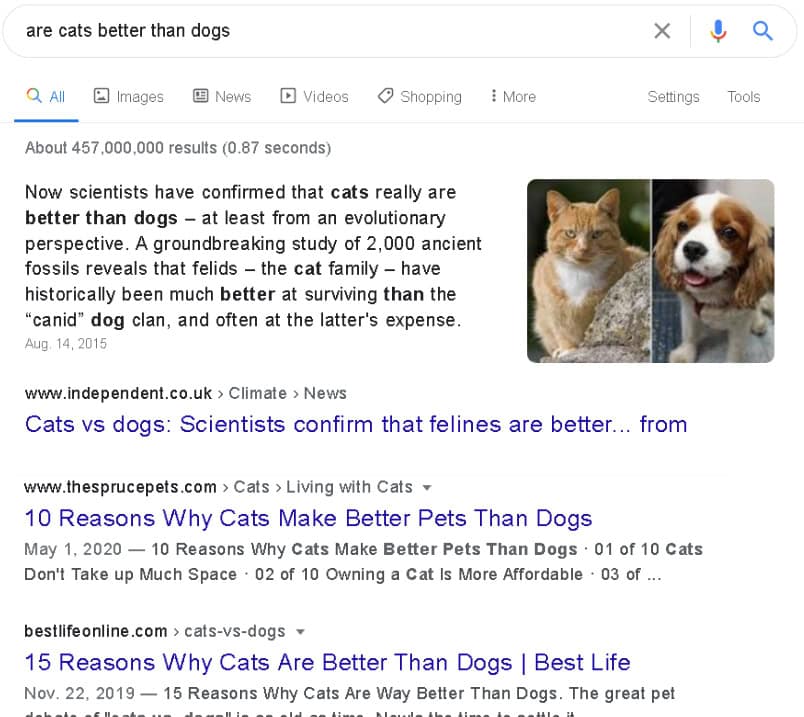
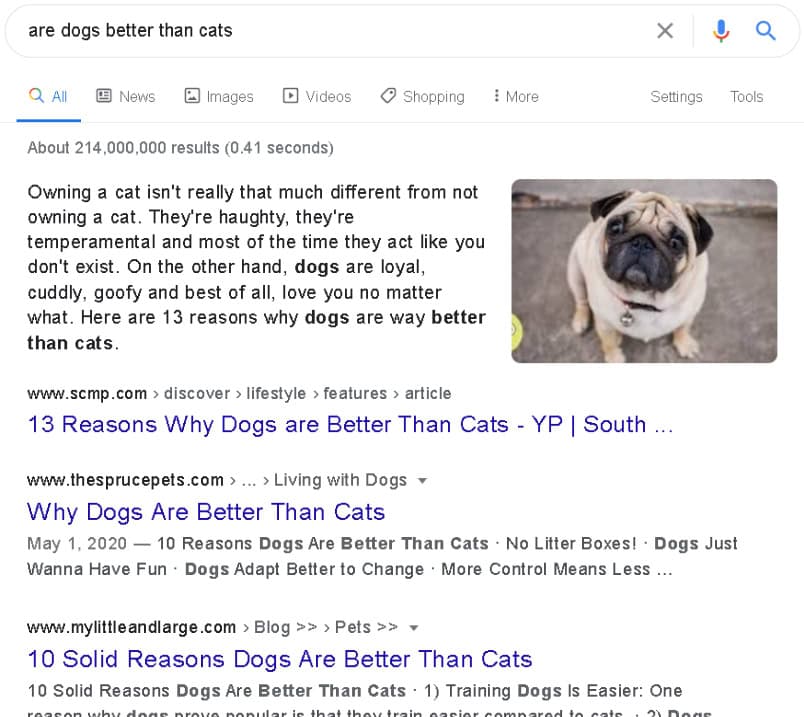
A simple reordering of words “cats better than dogs” vs. “dogs better than cats” can make a big difference in the results you get to confirm your beliefs. Be mindful that we often seek data to validate our believes (instead of forming beliefs based on unsubjective data).
Page 18: Things you enjoy vs. Things you love
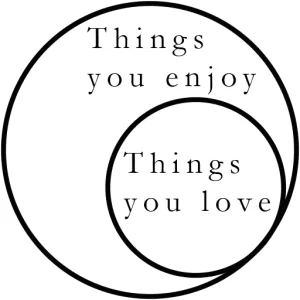
Page 29: Ikigai
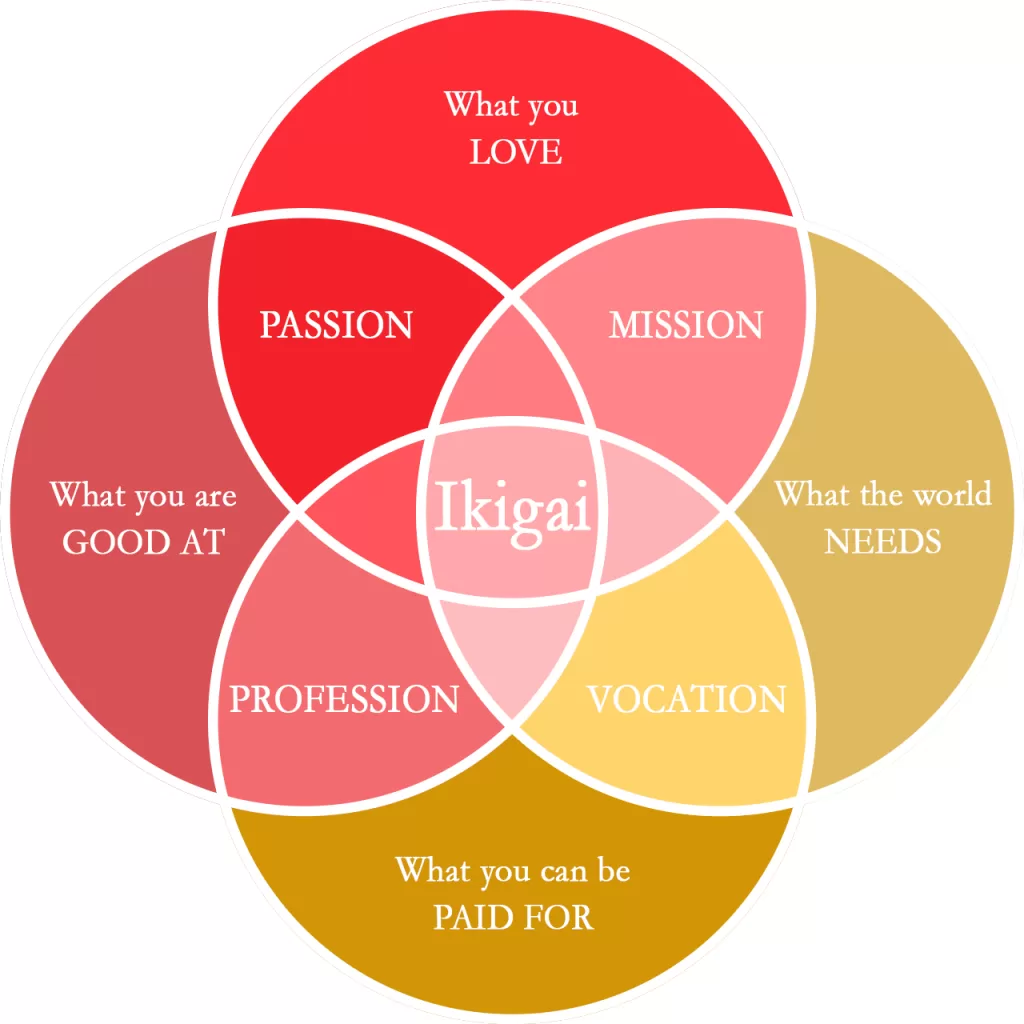
When What you are GOOD AT overlaps with What you LOVE, that is your PASSION.
When What you LOVE overlaps with What the world NEEDS, that is your MISSION.
When What the world NEEDS overlaps with What you can be PAID FOR, that is your VOCATION.
When What you can be PAID FOR overlaps with What you are GOOD AT, that is your PROFESSION.
When all 4 overlap, that is the the perfect combination known as Ikigai.
Page 71: Early homepage of Facebook
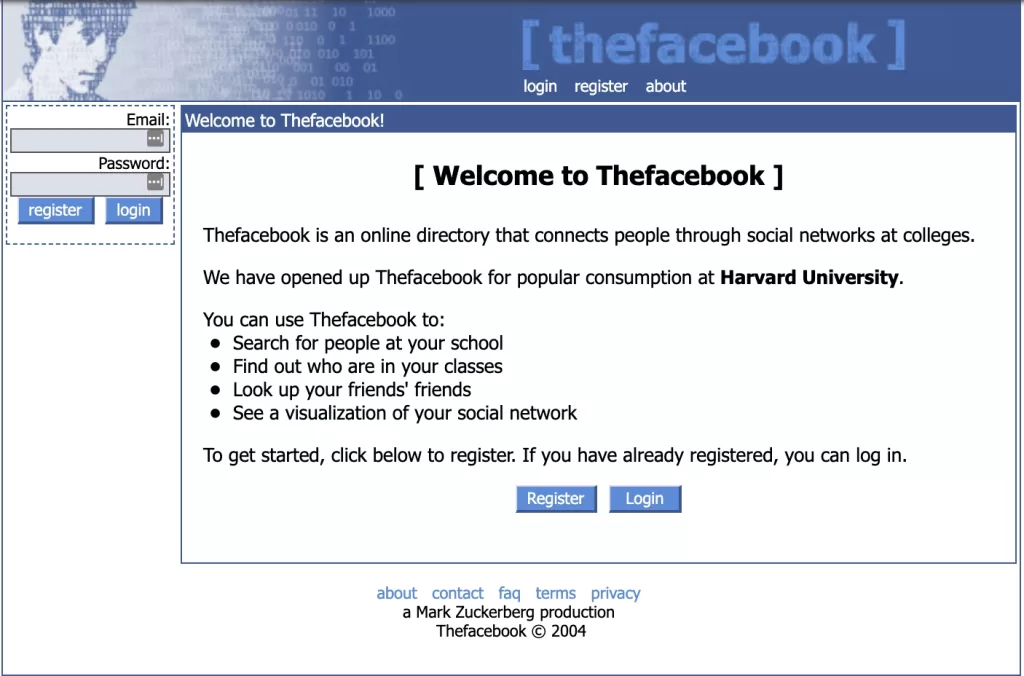
Page 105: OKR example
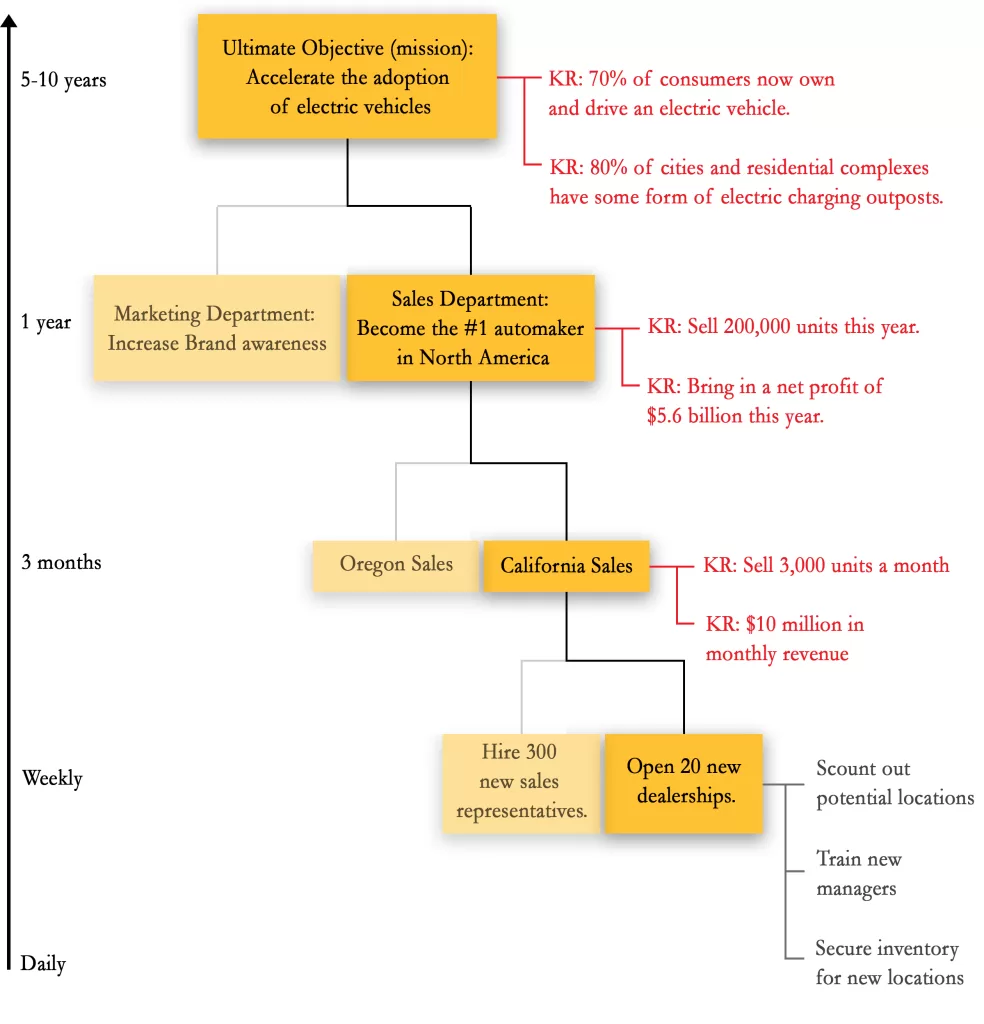
Objective (5-10 years out): Accelerate the adoption of electric vehicles.
Key result(s) to determine if the objective has been achieved: 70% of consumers now own and drive an electric vehicle, 80% of cities and residential complexes have some form of electric charging outposts.
Department-oriented objectives (1 year out): Marketing Department = Increase Brand Awareness, Sales Department = Become the #1 automaker in North America
Key Results: Sell 200,000 units and bring in a net profit of $5.6 billion this year.
Region specific objectives (3 months out): Oregon Sales Team, California Sales Team
Key Results: Sell 3,000 units and $10 million in revenue per month.
Initiatives (weekly) that serve to deliver on those key results above: Hire 300 new sales representatives, Open 20 new dealerships.
Initiatives (daily) which feed into weekly initiatives (for opening new dealerships): Scout out potential locations, Train new managers, Secure inventory for new locations.
Page 111: Pareto Principle
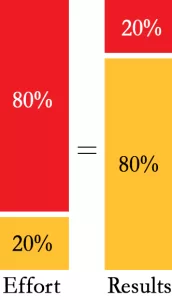
On the other hand, 20% of effort/activity often produces 80% of your results.
Page 113: Exercise #14 (Flow Chart recreation of Rory Vaden’s Focus Funnel)
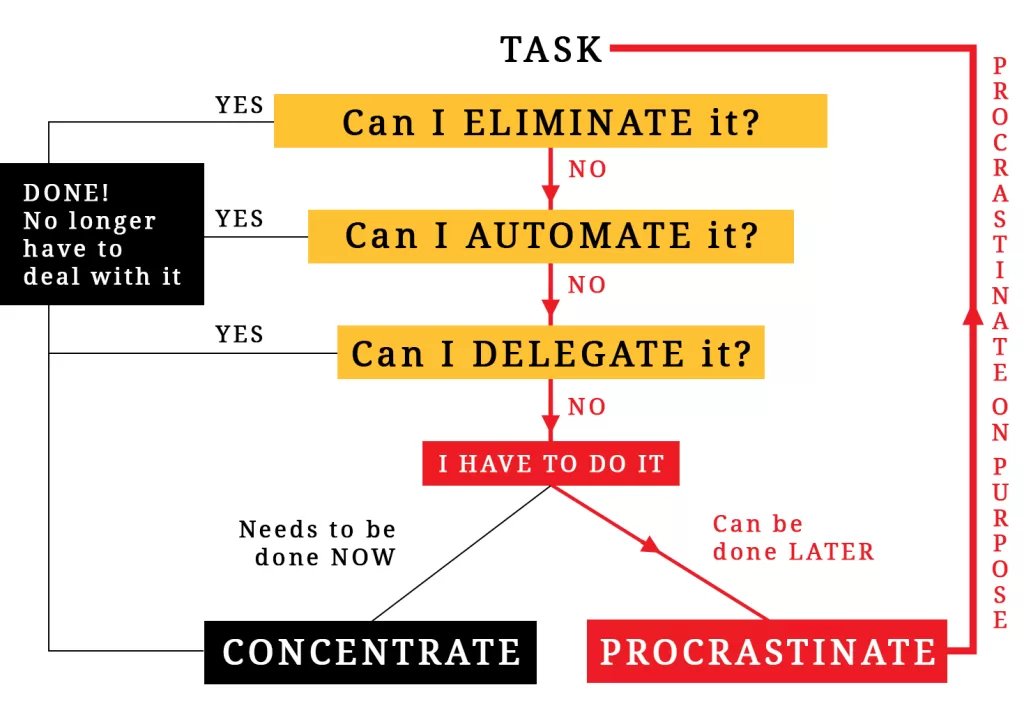
Can I ELIMINATE it?
Yes -> DONE! No longer have to deal with it.
No -> Can I AUTOMATE it?
Can I AUTOMATE it?
Yes -> DONE! No longer have to deal with it.
No -> Can I DELEGATE it?
Can I DELEGATE it?
Yes -> DONE! No longer have to deal with it.
No -> I have to do it
I have to do it
Needs to be done NOW -> Concentrate -> DONE!
Can be done LATER -> Procrastinate -> At which point it re-enters the workflow at a later date when it needs to eventually be addressed, going through the Eliminate, Automate, Delegate, Concentrate vs. Procrastinate evaluations again.
Page 121: Valley of Dissapointment

We often have linear and simple expectations of outcomes/results. However, in reality, outcomes are often exponential. Things often start slower/results are often poorer to start, and when they do finally pass a tipping point, tend to scale exponentially. Because of this, to achieve our goals, we need to be resilient or adjust our expectations in order to weather that valley of disappointment that often results when reality does not match with our expectations.
Page 123: Persistence
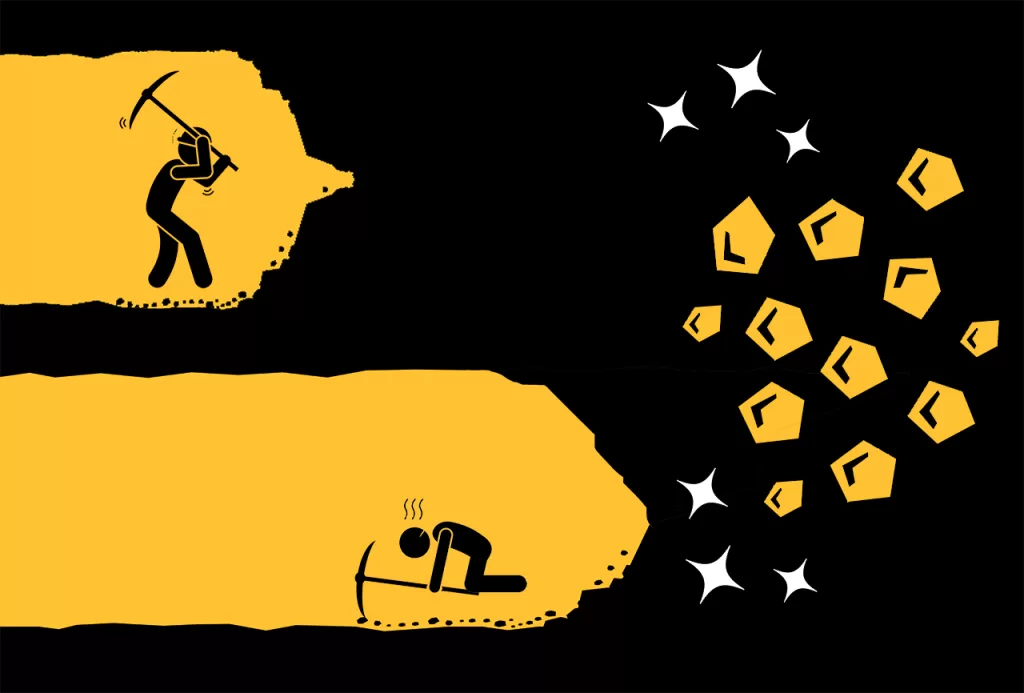
Page 153: Dunning-Kruger Effect
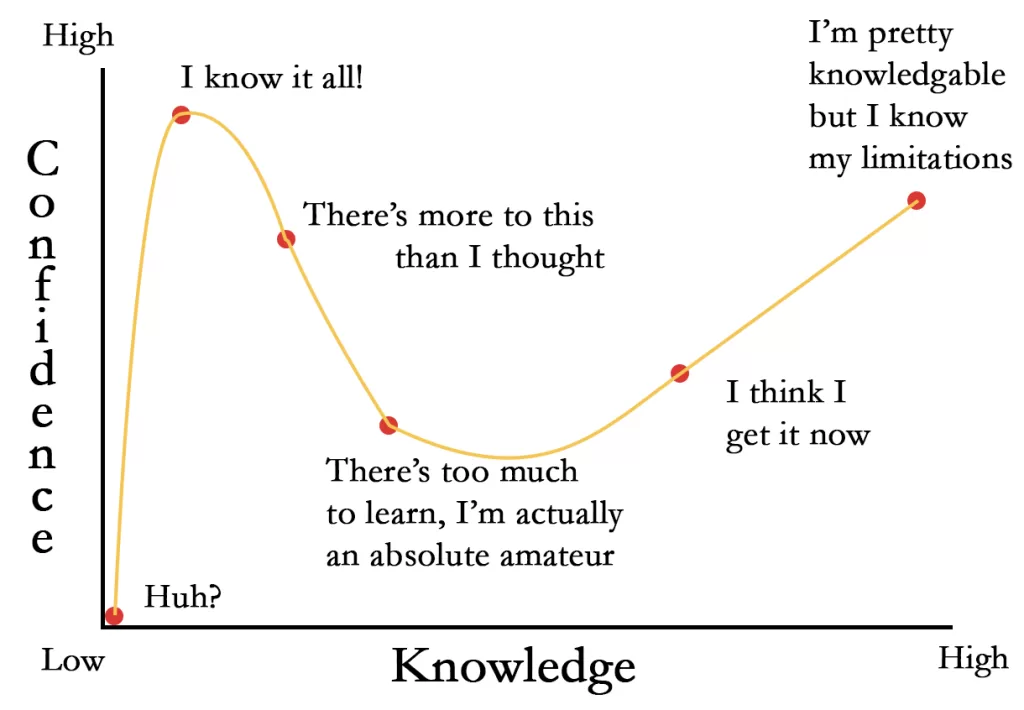
1. You lack confidence when you have no knowledge.
2. When you’ve done some research and have some knowledge, you may be mislead with overconfidence and think you know it all. Observed frequently with keyboard warriors on social media who seem to be an expert at every new trending topic. During COVID, we saw an outbreak of so-called respiratory virus experts. During the shooting of George Floyd, many gun control “experts”, both for an against, crept out of the woodworks.
3. With more research, you realize that there’s more to the topic than you expected.
4. This leads to many professionals in the field doubting themselves (the more you know, the more you know what you don’t know).
5. As you continue to build expertise, you start to build up confidence again with a humble realization and acknowledgement of your blind spots and limitations.
Page 175: T-shaped Thinker
